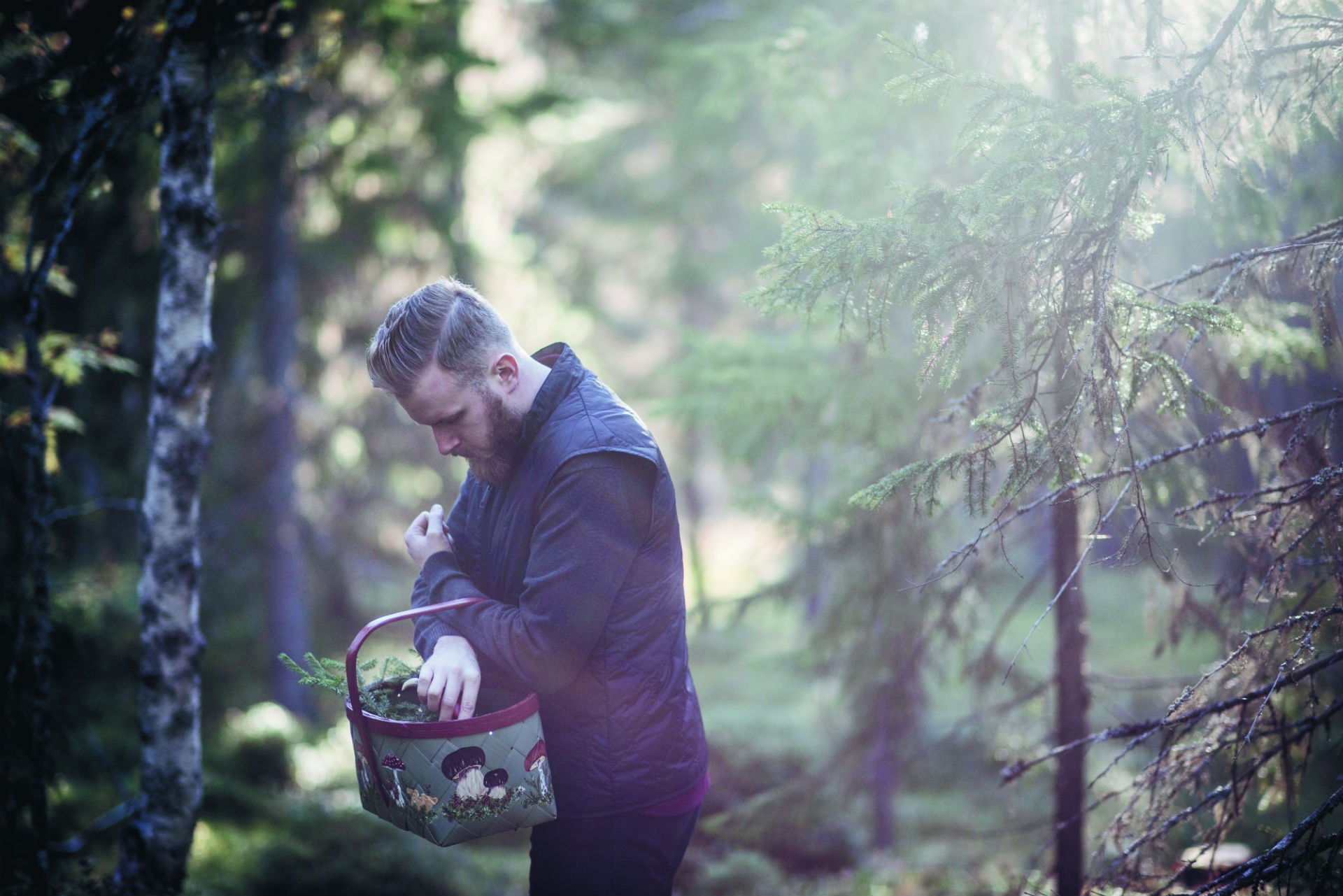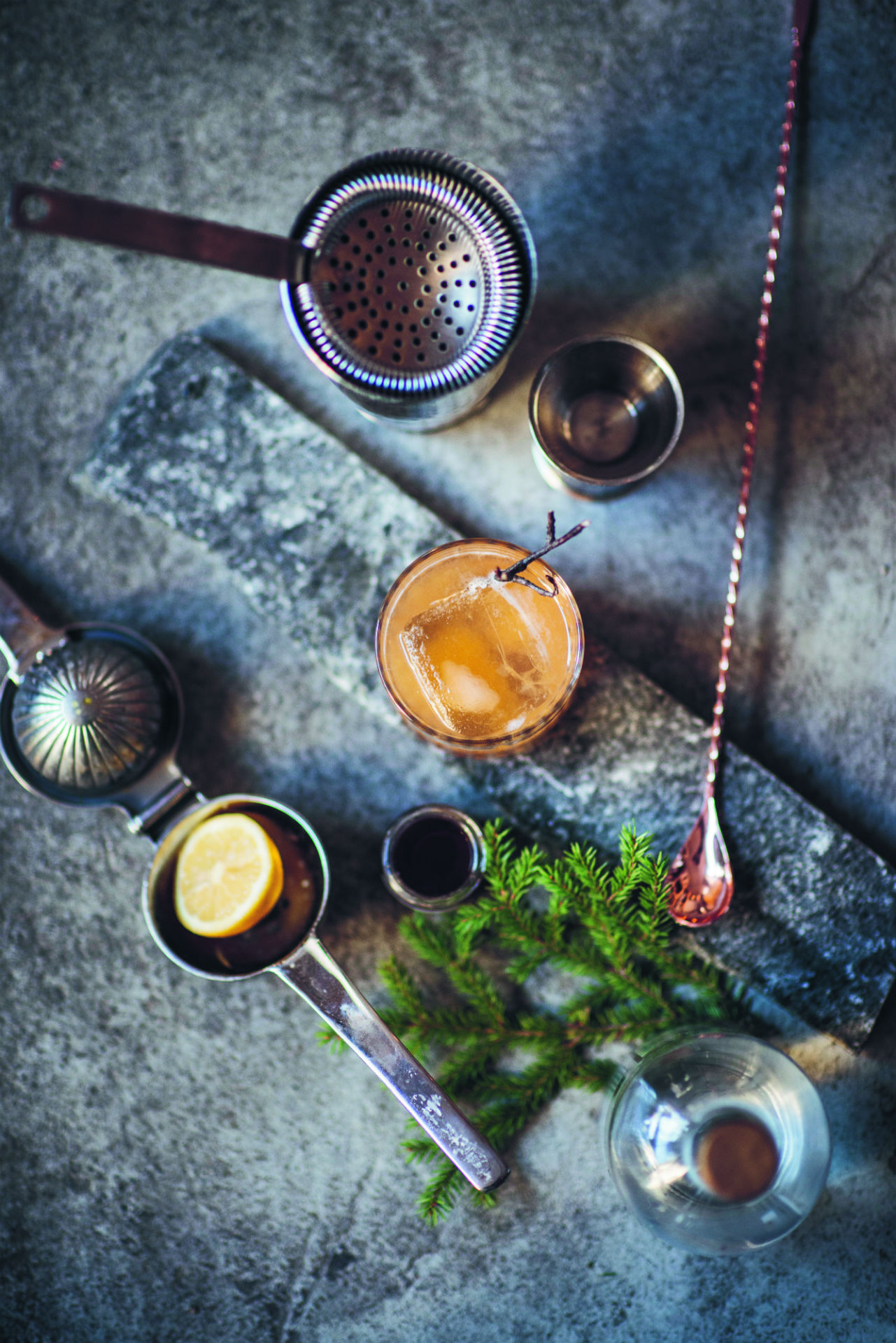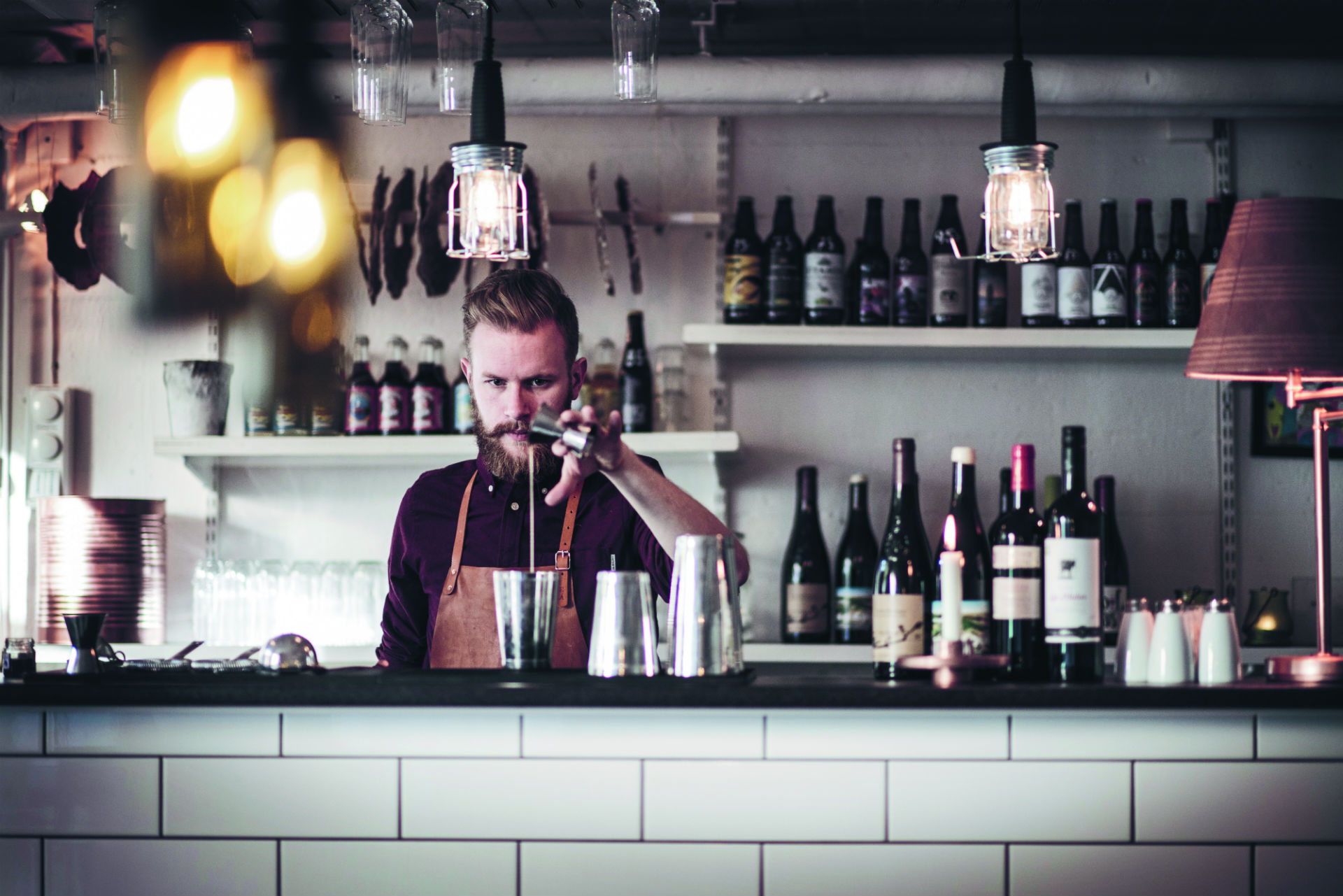Unique berries
There is a good reason for meeting Emil in the forest. Gathering edible plants and berries is known as foraging; in gastronomy it has become a concept that attracts culinary travellers to fine restaurants around the world – including the internationally renowned Fäviken Magasinet, which has a menu that mostly originates in the surrounding forests, mountains and marshes, by Lake Kallsjön in Jämtland. However, it’s not just in the restaurant world that foraging has become popular, but also with ambitious bartenders. For Emil, foraging in the forests of northern Sweden is not simply a means of gathering the flavours of which he is so fond, but also a challenge that is part of his work to develop new taste experiences. Berries are his particular inspiration.
“Cloudberry and Arctic bramble are the boldest. Using them you can really reconstruct a spirit and turn it into something incredible. You can infuse cognac with cloudberries and get something that tastes of Juicyfruit, or combine Arctic bramble with gin.” Between his shifts bartending, Emil has travelled the world, competing with his northern Swedish cocktails. He was the only Swede to qualify for the prestigious Havana Club Grand Prix – thereby putting him among the world’s best 50 bartenders. He mentions it in passing as “having been lucky”:“Cloudberries, for example, aren’t found in many places in the world, so I’m more exotic than the guys who come from the Bahamas. And then I’m a bloody idiot, so people have written about me.”
Emil carries on talking, uncensored, like a self-aware hipster connoisseur of the cocktail world – but entirely without the anxiety that defines a snob. He’s now 27 and winning competitions is still important, but he does not stress about it and competitions are not top priority.
“I’m most proud of succeeding in starting up a cocktail culture in Umeå. We now have a group of regulars who come to us and are genuinely interested in a taste experience.” Shrubs for flips “But what about bilberries?” I ask, bending down in the undergrowth. “Aren’t they good in cocktails?” “Nah, they’re just crap! They’re great to eat here in the forest, but they don’t taste of anything. It’s the sensation of eating a fresh bilberry you want, when it splits in your mouth. And it’s a bloody effort to make that happen in a cocktail.” Cowberries, cranberries and rowan berries, however, are great for mixing with spirits, continues Emil. “Rowan berries are like a northern grapefruit. They’re really bitter eaten raw, but if you make a syrup and manage to balance the bitterness, it’s just amazing.” Emil usually makes something called shrub, a method that Americans used to use for preserving fruits and berries. Stir the berries or fruit into slightly more than their volume in sugar and then pour on a suitable vinegar. This mixture then stands for two weeks at room temperature under clingfilm, and is then strained. It is a type of pickled syrup with a fruit flavour and is used as sugar.
“We made one shrub from Arctic bramble and figs, but have also made ones from blackberry and banana,” says Emil, and goes on talking about making flips from a shrub. Flips are basically spirits, sugar and egg, but with a shrub instead of sugar.
Herbaceous plants are also great in cocktails, according to Emil, particularly meadowsweet. He’s found that the best way of extracting the flavours of plants is to first freeze them and then let them defrost in a cooled syrup, leaving it to stand for a week, so the syrup is full of the plant’s flavours.












